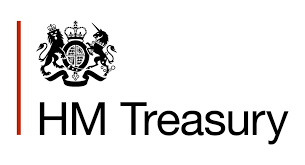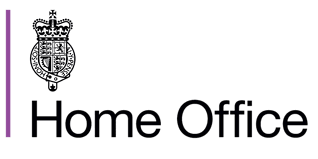HISTORIC PRESS RELEASE : Chief Secretary sets out firm and fair approach to public sector pay [September 1997]
The press release issued by HM Treasury on 16 September 1997.
The Government’s approach to public sector pay next year will be firm and fair, the Chief Secretary Alistair Darling emphasised today. He set out the Government’s public sector pay policy in the publication of the annual evidence to the pay review bodies.
He commented:
“We made it clear in our manifesto that we were determined to put the public finances on a firm and sustainable footing and to do that we were committed to sticking to the existing spending totals for the first two years of this Parliament. That means that the pay review bodies must have regard to the affordability of any award, since public sector pay accounts for one third of public spending.
We are not going to repeat the mistakes of the past by conceding pay awards which would undermine Britain’s long-term economic prospects.By taking firm action now we
can build the conditions for long-term economic stability that we all want to see.Our aim is to pursue a firm and fair approach to public sector pay, recognising the need to retain, recruit and motivate staff, within tough cash limits.”
The written evidence particularly asks the pay review bodies to take into account the following key points:
- pay costs need to be kept within existing spending plans
- review body groups have done well in relation to other
public sector groups - the new procedures for the inflation target and monetary policy give greater confidence about future price stability
- and proposes that pay recommendations for the coming year should be low, reflecting good inflation prospects, and consistent with the need for departments to maintain the delivery of services within their budgets.
It also stresses that the extra money allocated to education and health in the Budget was for front line services and not pay increases.
The full evidence is attached.
NOTES TO EDITORS
There is no public spending round this year. Pay costs will need to be contained within existing spending plans. There will be no access to the Reserve to fund spending on pay in excess of those plans.
ECONOMIC CONSIDERATIONS AND PUBLIC SECTOR PAY POLICY
This evidence presents the Government’s policy and expectations on public sector pay and the economic background to the work of the pay review bodies in framing their recommendations for the coming year.
Introduction
2. The Government’s commitment to keep public spending within the existing departmental plans, will be a key consideration in determining pay in the coming year taking priority over other general pay and price indicators.
3. The Government recognises that there are competing pressures for the available resources. Nevertheless, it is necessary to establish the right balance between pay costs and public services for the pay settlements in 1998.
4. In particular, the Government believes that Pay Review bodies must take account of the fact that Departments will have to be able to afford the pay increases while maintaining the delivery of services within their spending plans. Recommendations should be low for this reason and to reflect the good inflation prospects.
5. In support of this position the pay review bodies are asked to note that:
- pay pressures generally remain subdued
- pay review body groups have done well in the past by comparison with the rest of the public sector both in recent years and over the longer term
- the inflation target, and the new monetary policy procedures, give greater confidence in future price stability.
Public sector pay
6. The Government is committed to keep total public spending within the existing overall spending plans and to keep departmental programmes within the specific spending plans announced by the previous Government last November or, for health and education, the plans announced in the July 1997 Budget. Pay costs will need to be contained within these plans without recourse to the Reserve.
7. Public sector pay needs to be considered in that context. Specifically, the Government intends:
- to take a firm and fair approach to public sector pay
- to resist unreasonable public sector pay demands, and
- to take account of the need to retain, recruit and motivate staff
- within the framework of tough cash limits.
8. In total, the public sector pay bill is just under 90billion Pounds, equivalent to approximately 30 per cent of total public spending. The breakdown of the total is as follows:
Public sector paybill (1996) broken down by pay settlement groups[1]
9. For the pay review body groups, the total paybill is more than 30 billion Pounds, equal to a third of the total public sector pay bill. Pay settlements for these groups have significant consequences both directly on the relevant departmental spending plans and, by setting the tone for pay settlements, indirectly in public spending more widely.
Public spending
10. The Government has embarked on comprehensive reviews of departmental spending plans aimed at the better distribution of available resources. Meanwhile, and specifically for this year and next, the Government’s commitment is to keep to the overall spending plans announced by the previous Government in their last Budget in November 1996.
11. This means that there will not be the usual annual public expenditure survey this year. While Departments have flexibility to adjust the distribution of resources within their spending plans they must keep within the existing totals.
12. For Health and Education, the totals include the additional allocations from the Reserve and from the proceeds of the windfall tax announced in the Budget in July 1997, but it is important to recognise the purpose of these additions is to spend more on services. In commenting on the additional resources and the planning process now under way, the Secretary of State for Health stressed the need to make sure to get the maximum value for patients from the money that has been made available. The Secretary of State for Education and Employment specifically said he expected the School Teachers’ Review Body to take into account the need for restraint in pay
settlements so that the additional money can make a real contribution to raising standards.
Pay settlements and earnings
13. Settlements have, over the last year, remained very stable by most measures (see Chart). Settlements data include the following:
- Industrial Relations Services (IRS) report that median whole economy pay settlements for the three months to end July 1997 was at 3 per cent for the 16th consecutive month. Their annual figures for the 12 months to the end of July show the median increase in settlements for the whole economy was again at 3 per cent. It has been at this level since October 1996. The annual median increase in the public sector, which was at 2.9 per cent over April to June fell to 2.5 per cent in July.
- In addition to sustained low levels of settlements, the IRS evidence shows that the upper quartile of the headline 3-month series for the whole economy has been at or below 3.5 per cent since October 1996.
- Incomes Data Services (IDS) reported in August that just under three in ten settlements from April onwards are under 3 per cent, just over four in ten are between 3 per cent and 3.5 per cent with the remaining three in ten deals worth over 3.5 per cent. Around one in five deals are concentrated at 3 per cent. The top end of the range is heavily dominated by financial sector firms whereas the public sector dominates the bottom end. Discounting the public sector, the IDS found that the level of private sector settlements was pretty similar in the second quarter of 1997 to that in the first quarter. In September, IDS reported signs of a pick-up in the level of pay increases being awarded. But of the new settlements they analysed, over half were for settlements worth under 3.5 per cent.
- Settlements data collected by the Office of Manpower Economics to inform some central pay negotiations show a median of 3.5 per cent for private sector non-manual total pay settlements for the year to 7 June 1997, unchanged from 3.5 per cent in the year to 7 February.
- The latest CBI Pay Databank shows continued stability in manufacturing pay awards which provisionally averaged 3.3 per cent in the three months ending June 1997, slightly up on the 3.2 per cent average for the first quarter ending March but down from 3.5 per cent for the three months ending June 1996. Service sector pay awards averaged 3.6 per cent in the three months to end June, the same as in the three months to end March.
Average earnings
14. Average earnings generally increase faster than pay settlements, reflecting the additional costs of other changes. But the same degree of stability is reflected in whole economy average earnings growth, which has been broadly stable for more than four years. Average earnings growth fell back to 41/4 per cent in May 1997 from 4 3/4 per cent at the end of 1996. Earnings growth in manufacturing has remained at 4 1/4 per cent-4 1/2 per cent since February 1997. Average earnings growth remains low by historic standards.
Trends in the 1990s
15. During the 1990s, pay settlements in the public sector have, with some temporary fluctuations, moved in line with private sector settlements. Over the seven years to March 1997, IRS median settlements have averaged just over four per cent in both the private sector and the public sector.
16. There is, however, some disparity between settlements within the public sector. Senior staff in particular have benefited from settlements significantly above the rest of the public sector. For the future, the Government’s objective is one of consistency and fairness across all public sector groups and at all levels.
Inflation
17. The new monetary policy arrangements are expected to establish a new climate of low inflation. Under the new arrangements the Bank of England has operational responsibility to set interest rates to meet the Government’s inflation target (defined as the 12-month increase in the RPI ex MIPS) of 2.5 per cent. This new monetary framework provides a long-term approach which is transparent, open and accountable. As a result, long-term interest rates and inflation expectations have already fallen.
18. The Bank of England’s central projection for underlying inflation 2 years ahead, published in its August inflation report, is around 2 1/2 per cent. Their forecast has been reduced mainly because of the three 0.25 percentage point interest rate increases seen since June and the fiscal tightening announced in the budget. The Bank’s short term profile for inflation is for “the twelve month rate to fall below 2 1/2 per cent over the next year or so, but then begin to rise as growth in the economy picks up.”
19. The average of the Treasury’s compilation of independent forecasters views on inflation (RPI ex MIPS) published in September is 2.5 per cent for 1997.
20. Underlying inflation (RPI ex MIPS) rose to 3.0 per cent in July from 2.7 per cent in June, but fell back to 2.8 per cent in August. The expectations are that it will be successfully contained by the inflation target and the new monetary policy procedures. In the short term, headline inflation may run above the underlying rate, and has now risen to 3.5 per cent in August. Nevertheless, in the circumstances, the government maintains that it cannot afford to let the headline rate influence this round of pay settlements when the prospects for the underlying rate are so good.
Pay review body groups
21. In considering their recommendations, the pay review bodies should take a particularly rigorous approach to the issue of affordability within existing plans.
22. Retention and recruitment remain good. There may be some specific shortages in some areas, but the particular difficulties are not necessarily pay-related. Generally, the skill shortages that may currently be putting pressure on pay in some parts of the private sector do not seem to be affecting the public sector. There are no indications that any general across-the-board action on pay is necessary on this account.
23. The review bodies’ main policy recommendations for April 1997 were accepted but their introduction was staged for all groups, for the second year running in most cases. The 1997 recommendations averaged some 3.3 per cent. This was considered high, and difficult to meet from existing plans without squeezing services. The settlements were staged by paying 2 per cent from April 1997 and the balance from December 1997.
24. Staging reduces the initial costs of a pay settlement, but thereafter the recommendations are paid in full. This creates an increase in pay costs in the second year that must be taken into account in assessing available resources.
25. When the staging has been completed in December, all groups will be receiving the full amounts recommended for the 1997 pay settlement, averaging 3.3 per cent. Those groups whose settlement was staged in 1996 will also have similarly received the full increase recommended for that year, averaging some 4 per cent.
26. For both years, these averages are high in relation to other public sector settlements. In 1996 most other settlements ranged from below 3 per cent up to around 3 1/2 per cent. In 1997, public sector settlements have generally been lower in the range 2 1/2 to 3 1/4 per cent.
27. Similarly, over the longer term, pay settlements for the review body groups have tended to be at the top and of the range of public sector pay settlements.
Conclusion
28. The Government asks the pay review bodies this year to make recommendations that recognise the need for pay settlements to be affordable within Departments’ existing spending plans, and to give this priority over other considerations.
29. In addition, pay increases should be low next year so that Departments can afford to maintain the delivery of services.
30. Recommendations should also reflect the particular circumstances of the remit groups, on a case-by-case basis, addressing specific issues as necessary.
HM TREASURY
September 1997
[1] The three separated segments on the right of the chart cover employees whose pay is determined by the Pay Review Bodies. The NHS employees covered by RBs are doctors and dentists, nurses, and professions allied to medicine. Other NHS employees are included in the “Other Public Sector” group.



